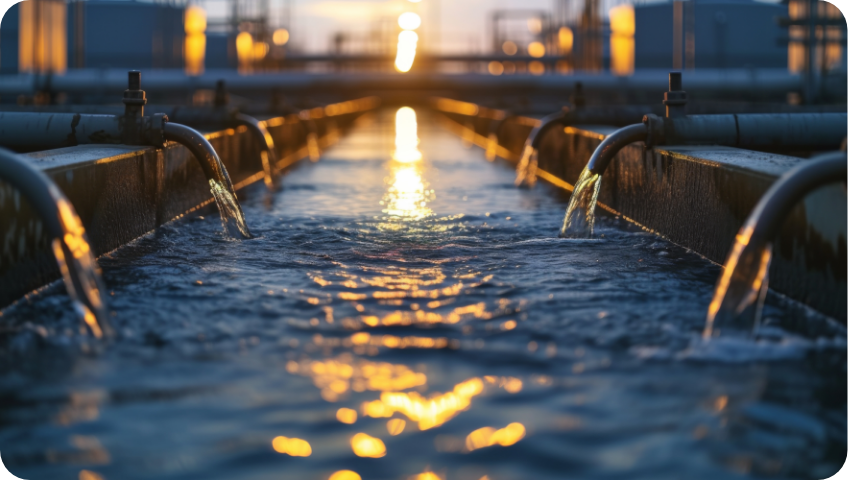Environmental Sustainability|Waste Management
Nuvoton actively reduce the environmental impact of our business operations by investing in innovative technologies and initiating layouts for renewable energy and net carbon zero emissions. We enhance resource use efficiency and implement waste management to respond to the continuously evolving international environmental regulations, extreme climate events, and other risks. By estimating financial impacts and planning management costs in advance, we formulate environmental strategies and build operational resilience for the company.




48.8
%
Approved SBTi Near-Term Target: Commitment to Reduce Scope 1 and 2 Emissions by 2030 Compared to the 2022 Baseline
25
%
Approved SBTi Near-Term Target: Commitment to Reduce Scope 3 Emissions by 2030 Compared to the 2023 Baseline
1163000
kWh
Nuvoton Taiwan's Annual Electricity Saving Achievement in 2024
Waste Management
Nuvoton adheres to the "Safety, Health, and Environmental Policy" and the goal of "No Environmental damage," striving to minimize waste treatment and maximize resource recycling. Through source reduction and enhanced recycling and reuse, we aim to reduce the environmental burden of production while ensuring all management measures comply with regulatory requirements.
Management Strategies and Implementation
Source Reduction and Segregated Management
During IC design R&D and wafer foundry production processes, we promote initiatives such as extending material usage, optimizing processes, and recycling packaging materials. Continuous evaluation of waste recycling and reuse is conducted to reduce waste generation and increase resource recovery rates.
Standardized Management Procedures
Following the "Waste Management Procedures," we implement waste classification, collection, storage management, reporting, outsourcing for disposal and reuse. Regular inspections are conducted to monitor process outputs, drive waste reduction improvements, and ensure compliance beyond regulatory standards.
Legal Outsourcing and Audit Supervision
We government-approved vendors, verify the appropriateness of disposal methods before engagement, and complete on-site inspections. Subsequent audits and GPS tracking of transportation routes are performed regularly to ensure proper waste handling and fulfill our responsibility as the waste generator.
2024 Waste Management Data
audits
In 2024, a total of 19 audits were conducted, with no cooperation termination due to regulatory violations or related issues, and there were no improper waste disposal incidents at Taiwan and Japan plants.
Kg/layer
The unit product waste output was 0.094 Kg/layer-wafer mask.1
1 Increase from 2023 due to the replacement of wastewater plant facilities and increased sludge production. To continue maximizing resource recycling through outsourcing, an evaluation of inorganic sludge (CaF, resource recycling) reuse was conducted, starting reuse in 2024.
Nuvoton's waste disposal policy prioritizes reuse. For waste that cannot be reused, incineration and landfill are adopted. In 2024, the total waste amounted to 2,893 metric tons, including 2,388 metric tons of general industrial waste (83%) and 505 metric tons of hazardous industrial waste (17%). The amount reused reached 805 metric tons (61%); incineration accounted for 1,333 metric tons (46%); chemical treatment (25%); landfill 32 metric tons (1%), along with a small portion treated chemically.
Waste Generation Over the Past Three Years
Waste Management Plan and Targets
Nuvoton’s future plans will continue to promote waste management, maintaining the same three major goals in 2025 as in 2024:
Continuous Promotion of Waste Classification and Reduction
Hazardous Waste Reuse Rate > 95%
Increase Waste Recycling and Reuse
Waste Recycling and Reuse Rate >75%, Waste Landfill Rate <5%
Effective Management of Waste Treatment
100% Annual Inspection Rate by Entrusted Contractors
Reuse Treatment Solutions
| Location | Solution | 2024 Reduction Benefits |
|---|---|---|
| Nuvoton Taiwan | CaF2 Sludge (Resource Recycling) evaluation | Changed from landfill treatment to reuse, increasing the reuse amount of sludge by approximately 53 tons/year. |
| Waste Sulfuric Acid: Recycle and dilute into industrial-grade dilute sulfuric acid for industrial use (not for drinking water treatment, medicine, or fertilizer additives | Recycle 375 tons | |
| Waste Hydrofluoric Acid: Recycle and use as raw material for industrial-grade sodium fluosilicate, applied as a flux agent | Recycle 69 tons | |
| Waste Isopropanol: Recycle and distill into industrial-grade isopropanol | Recycle 24 tons | |
| Waste Organic Solvents: Recycle and distill into industrial-grade organic raw materials | Recycle 44 tons | |
| Waste Chemical Drums: Recycle, clean, and reuse, or crush and use as plastic or glass raw materials | Recycle 8.7 tons | |
| Recycled Photomasks: Clean and remove pattern, use to produce recycled photomasks or optical materials | Recycle 0.4 tons | |
| Recycle Mixed Hardware (including waste electronic components, scrap, and defective products): Recycle valuable and other metals after treatment | Recycle 6.96 tons | |
| Recyclable waste (waste paper, glass, scrap iron and aluminum, waste polystyrene, aluminum foil packaging, PET bottles, and waste plastics): Recycle by recycling contractors | Recycle 55.0 tons | |
| General waste (waste plastic, paper, and wood mixtures): Recycle through physical screening and treatment | Recycle 18 tons | |
| Nuvoton Japan | Sort waste materials and convert them into valuable resources for reuse | Recycle 3.92 tons |
Impact of Waste and Response Measures
Nuvoton places great importance on the impact of manufacturing processes on people, the environment, and society. Internally, the company continuously promotes source reduction and recycling and reuse initiatives. For waste disposal, Nuvoton carefully selects government-approved and legally compliant vendors, verifies the appropriateness of disposal methods prior to engagement, and conducts regular on-site inspections and audits after commissioning. These measures ensure compliance beyond regulatory requirements and effectively mitigate risks.




